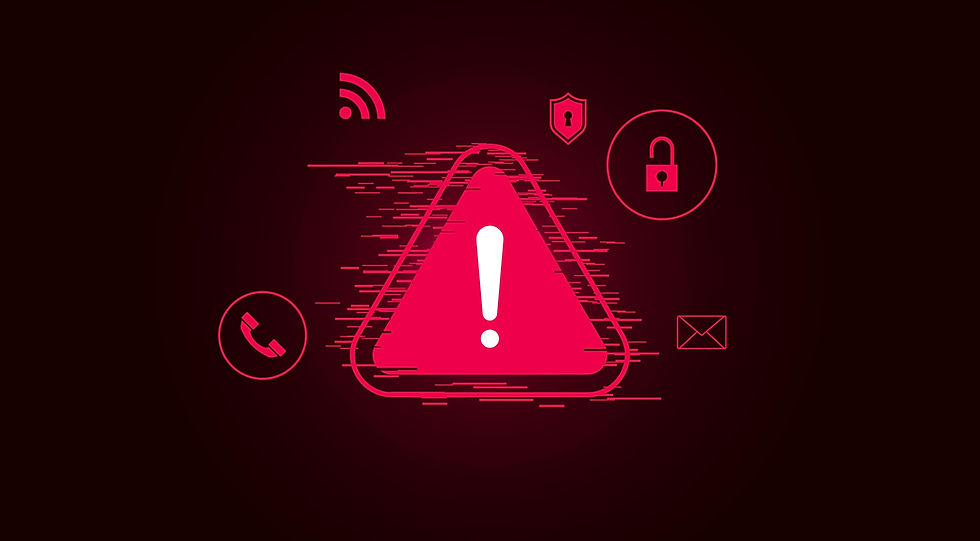Building a Robust Cybersecurity Framework: Essential Steps for Businesses of All Sizes
- Joel Proulx
- Jul 16, 2024
- 3 min read
Updated: Feb 12

In today's hyper-connected digital landscape, where potential cyberthreats loom at every keystroke or mouse click, a robust cybersecurity framework is necessary for a brand’s survival.
Remaining operationally secure is no small feat, from system vulnerability identification to active threat detection. First, you must conduct a cybersecurity or security posture assessment to discern where you stand and how well-protected your system is. From there, you can shore up potential vulnerabilities and implement appropriate security training measures to ensure everyone does their part. For example, employees should know that 92.4% of malware is delivered through email and learn how to spot it.
Here are the essential steps for building a robust cybersecurity framework for all business sizes.
1. Assess Current Security Posture
You can't change or improve existing processes without first understanding the situation. Conduct a thorough cybersecurity assessment or audit to uncover and fully understand your operation’s security posture. Dig into sensitive data and how it’s stored or handled and understand intellectual property and how it should be protected. It also requires delving into customer information, financial records and other data-oriented systems.
Cybersecurity teams should familiarize themselves with any data collected, stored, processed and shared with the company. Suitable measures should be established to secure and protect this information.
2. Identify Critical Assets and Vulnerabilities
During audits, take measures to identify, quantify and understand critical assets the company handles or owns, including those related to third parties and supply partners.
How are these digital assets vulnerable? What would it mean for the company and associated parties if that data were breached, stolen or altered irreparably? Attack vectors that can be used to access this information should be thoroughly explored to find secure and patchable solutions.
3. Implement Key Cybersecurity Controls and Policies
Cybersecurity or data security at a large organization is a team effort. That means training and building awareness across the entire internal structure. Do this after establishing strong security policies and procedures that outline the acceptable use of digital resources and technology.
During assessment and implementation, consider organizational password management policies, data handling, technology and employee training, application or security tool usage, and incident response protocols. If someone encounters a data breach or phishing attempt, what should they do?
Some policies to consider include:
Secure network infrastructure like firewalls, VPNs, etc
Data encryption measures to protect sensitive information
Backup and disaster recovery
Data and system access controls with proper authorization to lock out potential threats
Endpoint security for on-site and off-site desktops, laptops and mobile devices
Employee training and awareness with proper tutorials for attack scenarios
Vendor risk management and assessments for anyone who accesses sensitive data
Technology restrictions to ensure compromised devices remain locked out
On-site software and physical security protocols to protect servers, all-access terminals or data centers
An excellent way to go about this is to create a cybersecurity checklist. This is vital for small businesses, which are especially vulnerable to cyberattacks because they lack the same security infrastructure many large companies have.
4. Continuous Monitoring and Threat Detection
The next step is to remain vigilant in the face of potential attacks. Continuous monitoring and active threat detection solutions are critical. They allow the appropriate teams to identify and deal with potential threats. Measures can even be taken after an attack or breach attempt to mitigate damage, such as blocking access to related accounts or access channels.
These measures and solutions must be installed preemptively. Implementing them after an attack does not benefit anyone or company data.
5. Establish Security Training and Awareness Standards
A consistent system must be established to train new employees, partners and vendors, or upskill long-standing workers on security standards. Cyberthreats constantly evolve, so new attack vectors, challenges and opportunities persist. While IT and technology teams receive regular training and updates on many of these changes, the average employee does not.
You might include training on how to spot phishing scams or attempts, social engineering experiences, and other potential employee-centered attacks. You should also cover protecting local systems, using safe and secure passwords and not sharing property or access badges.
Advanced support is also necessary, like what to do during an attack or how to spot suspicious behavior and bad actors. Today’s phishing scams are meticulously crafted, utilizing advanced AI tools, trusted voices, and nearly perfect forged documents and portals. They create an illusion of legitimacy, which is why training is essential.
Reliable Cybersecurity for Any Business Size
Businesses of all sizes can follow these principles, although the individual steps may differ. If you’re looking to improve cybersecurity or learn how to start securing an existing framework, Premcom can help. This leading provider of network and communication services offers services that will benefit your business.



